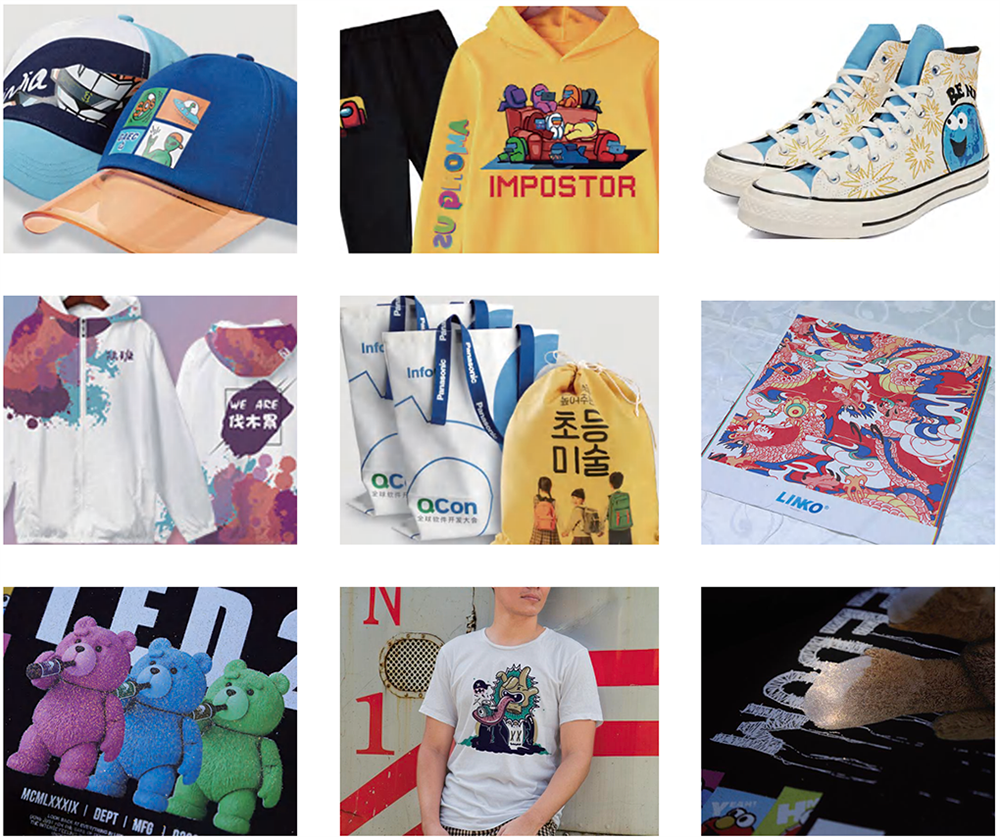
DTF printing offers businesses a cutting-edge print option for their products. However, it requires certain equipment and preparation to achieve the best results.
To ensure quality results, select a printer with high-quality inks and fabric-safe ink. Additionally, choose a printer that offers a wide range of color capabilities. CMYK is the standard and provides plenty of colors to work with, but you should also consider selecting a model that supports fluorescent inks.
Color Accuracy
DTF printer technology allows users to print high-quality, full-color designs on a wide range of fabrics. The process also eliminates the need for screen printing and reduces production time. This makes it a viable option for small- and medium-sized businesses that want to offer customers the ability to customize their own products. However, determining which type of printer is the right fit for your business can be challenging. To make the right choice, you should review user reviews and seek recommendations from professionals in the industry. You should also compare prices from different manufacturers or suppliers to ensure you get the best possible value.
One of the most important factors when selecting a DTF printer is color accuracy. Ink systems, droplet sizes, RIP software, and more all impact the final colors that will be printed on your garments. The best way to maximize color accuracy is by using a professional RIP solution that supports CMYK color management. This allows you to accurately preview the print results and prevents any surprises down the line.
Another important factor to consider is the ability of the DTF printer to produce vibrant, rich colors on dark fabrics. While this is possible with DTG, it can be difficult to achieve with traditional screen-printing. DTF printers use special inks that are formulated to deliver vivid, deep colors on dark and colored fabrics. In addition, they can produce prints with a soft hand on polyester, which is a major advantage over DTG prints.
If you’re considering a DTF printer for your business, it’s crucial to consider the cost of the printer and the ink system. Choose a model that will meet your budget and provide a solid return on investment. Additionally, it’s important to look for a manufacturer with a good reputation and a support system in case you run into any issues down the line.
DTF printers can be used to print a wide variety of garments, including t-shirts, dresses, and pants. They’re also ideal for printing on flat surfaces such as Thermos mugs and signboards. In addition, DTF printers can be used to print on both matte and gloss PET film.
Print Quality

DTF printing can deliver a high-quality, consistent print that’s sharp and clear. The process can be used for photos, fine art, and small text, and it supports a wide variety of colors. This printing method also offers a good level of vibrancy, which is particularly useful for printed goods that are intended to be worn. The color gamut of DTF prints is comparable to screen printing, and it can match Pantone colors if required.
The process uses a modified inkjet printer that prints CMYK and white layers separately. It also requires a special kind of ink that’s formulated specifically for the needs of DTF printer technology, and it must be made in the USA for better quality assurance. You will also need a special film and powder to bind the inks and cotton fibers together. In addition, you will need specialized RIP software that can handle both the CMYK and white layer prints.
In the DTF process, the first step involves printing your design on PET transfer film. This is a thin film with a unique coating that allows the ink to adhere to it. After the CMYK layers are printed, the printer will apply a layer of white ink over the top to prevent any CMYK colors from peeking through. Then, a powder adhesive is applied uniformly on the back of the film.
This layer binds the ink to the fabric, and it helps to give DTF prints their soft touch. Once the transfer is ready to be applied, it must be heated so that the ink melts and adheres properly to the fabric. This heating can be done in a curing oven or with a heat press machine.
DTF printing is a good choice for businesses that want to produce custom apparel quickly and at a low cost. However, it is important to keep in mind that the initial investment can be high and that the equipment must be carefully maintained. In addition, this process can require a lot of time and labor, and it is important to hire employees who have the right skill set. This will help you get the best results and ensure that your customers are satisfied with the finished product.
Ink Adhesion
DTF printing has superior ink adhesion that allows it to produce flawless designs, and it can be used on a wide variety of materials. In addition, the process is scalable and offers high-resolution prints that are durable and vibrant. This helps businesses deliver high-quality products that can help build a positive reputation and increase sales.
To ensure the best results, look for a printer that has an advanced pre-treatment system. This can remove contaminants from the fabric surface that inhibit ink adhesion. It is also important to use high-quality PET films that are treated specifically for the DTF printing process. These films have a unique coating that enables them to withstand the heat and pressure of the transfer process.
Additionally, make sure to choose a printer that uses a hot melt adhesive powder. This will help to ensure that the design adheres to the t-shirt. Finally, choose a heat press or tunnel that generates consistent temperature and pressure to ensure quality transfers.
When choosing a DTF printer, consider factors like print head size and color gamut. You may also want to test the printer with different types of fabrics to see how it performs. Also, consider the software compatibility and ease of use, as well as the manufacturer’s reputation and customer support.
The quality of the ink can also impact print quality. Look for a DTF ink that is formulated exclusively for this process and contains a polymer that helps the ink to adhere to the transfer film. In addition, look for a DTF ink that is made in the USA for greater quality assurance.
Lastly, you should conduct tape adhesion testing to assess the durability of the ink. To test the adhesion, apply a strip of tape to the surface of the printed fabric and remove it in one quick pull. If the ink lifts, it is considered to have failed the test. Inks rated as 4 or 5 pass the test and are suitable for garment decoration. However, a lower rating indicates the ink is not able to withstand repeated washing and rubbing.
File Format
Unlike traditional textile printing methods, DTF printer technology uses a desktop inkjet printer equipped with special textile inks to produce designs on a transparent PET film. The resulting transfer can be applied to a variety of fabrics, including polyester, cotton, and denim. These prints are durable and long-lasting, making them a great choice for apparel decoration.
The process of using a dtf printer starts with creating the design on your computer, or importing it from an external source such as a vector file or JPEG. Once the design is ready, it is inserted into the printer and transferred to the PET film. Afterwards, the cured film is placed on a pre-pressed fabric and heated in a heat press to ensure strong adhesion between the film and the fabric. The curing process can take between 15 and 20 seconds, after which the fabric is cooled down to prevent the film from sticking to itself.
While dtf printers are a powerful tool for garment decorators, they require an initial investment in specialized equipment and materials. Additionally, they require regular maintenance and a controlled environment for optimal operation. This can be costly for small businesses and startups that are just entering the market. However, once your business is established and you are able to produce high-quality prints in large quantities, it will be possible to recoup your investment in no time.
When it comes to print quality, DTF printers are capable of producing vibrant and accurate colors. In fact, they can match Pantone colors with greater accuracy than screen printing. However, screen printing still has the advantage of being able to reproduce a wider color gamut.
DTF printers also offer a more streamlined printing workflow and higher efficiency than other textile printing methods. They eliminate the need for weeding, which can be extremely tedious and inconvenient. This can save you time and money, and it is especially important when working with a large order of wholesale tank tops for printing.
Another benefit of DTF printing is that the white ink layer is printed simultaneously with the CMYK inks, whereas in other transfer printing methods like white toner, the white ink must be printed separately and then applied as a separate transfer. In addition, DTF printing doesn’t require any cutting or weeding, which can be a significant time-consuming task for many printers.




